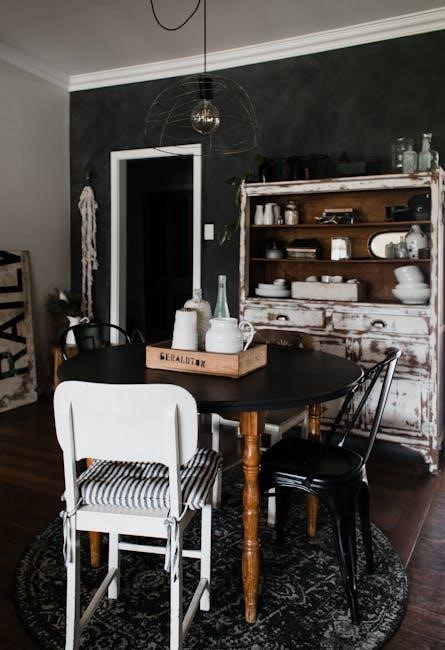MGP10 span tables in Australia provide essential design guidelines for structural timber, ensuring safety and compliance with local building standards. They simplify construction planning effectively nationwide.
Overview of MGP10 Structural Timber
MGP10 is a stress-graded structural timber widely used in Australia for its durability and strength in various construction applications. It is specifically designed for load-bearing purposes, such as flooring, roofing, and wall framing, ensuring compliance with Australian building standards. Treated to H4 standards, MGP10 timber is suitable for exterior and in-ground applications, offering resistance to rot and insect damage. Its versatility and reliability make it a preferred choice for both residential and commercial projects. The timber’s structural integrity is verified through rigorous testing, ensuring it meets the required stress grades for safety and performance. MGP10 is also compatible with modern construction techniques, making it a cornerstone material in Australian building practices. Its widespread adoption is further supported by detailed span tables, which guide engineers and builders in optimizing its use across diverse projects;
Importance of Span Tables in Construction
Span tables are crucial for ensuring the structural integrity and safety of buildings in Australia. They provide critical data on the maximum allowable spans for beams, joists, and rafters, helping builders and engineers design load-bearing structures that meet safety standards. By adhering to these tables, professionals can avoid overloading, which prevents structural failures and ensures compliance with Australian building codes. Additionally, span tables optimize material usage, reducing costs and environmental impact. They also simplify the design process, offering clear guidelines for various applications, from residential decking to commercial framing. This ensures that constructions are both functional and aesthetically pleasing while maintaining safety and durability. In summary, span tables are indispensable tools that balance safety, efficiency, and cost-effectiveness in modern construction practices.

Understanding MGP10 Span Tables
MGP10 span tables outline the maximum allowable spans for structural timber members under specific loads. They guide designers in selecting appropriate sizes for beams, joists, and rafters, ensuring safe and efficient construction practices nationwide.
Key Factors Influencing Span Tables
The development and application of MGP10 span tables are influenced by several critical factors. These include the type of load (dead, live, and wind), the span length, and the spacing of structural members. Additionally, the grade and size of the timber, as well as its treatment and preservative coatings, play a significant role. Wind speed zones, roof pitch, and edge restraint conditions are also essential considerations. The tables account for maximum allowable deflection and stress limits to ensure structural integrity. Design parameters such as imposed point loads, distributed loads, and decking mass further refine the span capabilities. These factors are carefully integrated into the tables to provide accurate and reliable guidance for engineers and builders, ensuring compliance with Australian building standards and safety requirements.
How to Read and Interpret the Tables
Reading and interpreting MGP10 span tables requires understanding the specific design parameters and conditions outlined. Start by identifying the type of structural member (e.g., joists, bearers, or rafters) and its intended use. Next, determine the load type (dead, live, or wind) and ensure the selected span aligns with the specified load capacities. Refer to the table’s notes for constraints such as maximum allowable deflection, spacing, and edge restraint conditions; Pay attention to dimensional data like roof pitch and load spacing, which affect the allowable span; Always cross-reference with Australian Standards (e.g., AS 1684) for compliance. Users should also consider wind speed zones and ensure the selected span meets local building codes. Proper interpretation ensures safe and efficient design solutions for various construction projects.
Applications of MGP10 Span Tables
MGP10 span tables are widely used in residential and commercial construction for designing floor joists, bearers, and roof beams, ensuring compliance with Australian building standards and safety requirements effectively.
Residential Construction
MGP10 span tables are extensively utilized in residential construction to determine the appropriate sizing and spacing of structural timber components, ensuring compliance with Australian building standards. These tables are particularly useful for designing floor joists, bearers, and roof beams, providing clear guidelines for maximum allowable spans under various load conditions. For instance, they specify the maximum decking mass and imposed loads, such as 20 kg/m² for decking and 40 kg/m² for floors, ensuring structural integrity. Additionally, the tables account for wind speed zones, which are critical for roof design in different regions. Designers and builders rely on these tables to select the correct timber grades, such as MGP10, for applications like upper lintels and pergolas. This ensures that residential projects are both safe and durable, adhering to local regulations and environmental factors. The use of treated timber products, such as those treated with Micronized Copper Azole (MCA), further enhances the suitability of MGP10 for outdoor and ground-contact applications, making it a versatile choice for Australian homes. By referencing these tables, professionals can efficiently plan and execute residential projects, from single-story homes to multi-level constructions, with confidence in the structural performance of the timber used. This streamlined approach minimizes errors and ensures that all components meet the required design parameters, ultimately contributing to the overall quality and safety of residential buildings across Australia.

Commercial and Industrial Applications
MGP10 span tables are also widely applied in commercial and industrial construction, where structural integrity and load-bearing capacity are critical. These tables provide detailed guidelines for designing beams, joists, and lintels in larger-scale projects, ensuring compliance with Australian building codes. For example, they specify maximum spans for roof beams and floor systems under varying load conditions, including higher dead loads and maintenance traffic on roofs. Wind speed zones are particularly important in commercial applications, as they influence the design of roofing and wall systems. The tables also cater to specialized applications like pergolas and carports in industrial settings. By referencing MGP10 span tables, engineers and architects can select appropriate timber sizes for commercial projects, ensuring safety and durability. This ensures that structures like warehouses, offices, and retail spaces meet stringent performance requirements while adhering to local regulations and environmental considerations. The use of MGP10-treated timber further enhances its suitability for demanding environments, making it a reliable choice for commercial and industrial applications across Australia.
Design Parameters and Considerations
Design parameters for MGP10 span tables include load calculations, wind speed zones, and material specifications, ensuring structural integrity and safety in various construction projects across Australia.
Load Calculations and Limits
Load calculations are critical in determining the maximum allowable spans for MGP10 structural timber. Dead loads, such as roofing materials and flooring, are typically based on a maximum floor mass of 40 kg/m² or roof load of 40 kg/m². Live loads, including imposed point loads of 1.8 kN and distributed loads of 2 kPa, must also be considered. These calculations ensure that the structural integrity of beams, joists, and rafters is maintained under expected conditions. Additionally, wind speed zones significantly influence load limits, with uplift and downdrag strengths requiring careful evaluation. The tables provide specific limits for various applications, ensuring compliance with Australian Standards like AS/NZS 1170.1. Proper load assessment is essential to avoid structural failure and ensure safe, durable construction designs.

Wind Speed Zones and Their Impact
Wind speed zones play a crucial role in determining the design parameters for MGP10 structural timber. Australia is divided into different wind speed zones, which influence the allowable spans and load capacities. Higher wind zones require stronger structural elements to resist uplift and downdrag forces. For instance, uplift strength coefficients of 1.00 and downdrag strength coefficients of 0.63 are commonly referenced in MGP10 span tables. These coefficients ensure that the timber can withstand regional wind conditions without compromising safety. Designers must consult wind zone maps and incorporate these factors into their calculations to comply with Australian Standards. Proper consideration of wind speed zones is essential to prevent structural failures and ensure the longevity of buildings in various climatic regions.

Accessing MGP10 Span Tables in Australia

MGP10 span tables are readily available through official Australian sources and third-party tools. Websites like Hyne and Meyer Timber provide downloadable PDFs and design software for easy access.
Official Sources for Download
Official MGP10 span tables in Australia are available through reputable sources like Hyne and Meyer Timber. These organizations provide downloadable PDFs tailored to Australian building standards. For instance, Hyne offers detailed span tables for MGP10-graded structural timber, suitable for various applications. Similarly, Meyer Timber provides comprehensive guides adapted from AS1684, ensuring compliance with local regulations. Additionally, resources like CHH Woodproducts offer design tools and span tables specifically for MGP10 products. These official sources ensure accuracy and reliability, making them indispensable for engineers and builders. Always verify the source and refer to the latest updates to comply with regional building codes and safety standards.
Third-Party Resources and Tools
Beyond official sources, third-party platforms offer convenient access to MGP10 span tables and associated tools. Websites like designIT and CHH Woodproducts provide downloadable PDF guides and interactive calculators. These tools simplify the selection of structural timber sizes for specific projects. For example, Meyer Timber offers a user-friendly interface to calculate spans based on load requirements; Additionally, platforms like Woodhouse TerraFrame provide detailed product information and span tables tailored for Australian conditions. These resources often include supplementary materials, such as installation guides and design software. While third-party tools are valuable, ensure they align with Australian Standards and local building codes. Always cross-reference with official sources for compliance and accuracy in construction projects.
The MGP10 span tables are a cornerstone for ensuring structural integrity and compliance in Australian construction projects. By providing clear guidelines for timber sizing and spacing, these tables enable engineers, architects, and builders to design safe and durable structures. Whether for residential, commercial, or industrial applications, adhering to these standards minimizes risks and ensures optimal performance under various loads and conditions. With resources available from both official and third-party sources, professionals can easily access the necessary data to meet local building codes. Always verify compliance with Australian Standards and seek professional advice for complex designs. Leveraging MGP10 span tables is essential for achieving reliable and long-lasting outcomes in timber construction projects across Australia.